U.S. Department of Transportation
Federal Highway Administration
1200 New Jersey Avenue, SE
Washington, DC 20590
202-366-4000
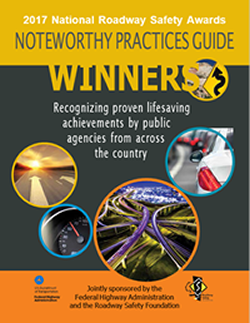
 |
Jointly sponsored by the Federal Highway Administration and the Roadway Safety Foundation |
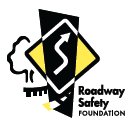 |
Recognizing life-saving engineering solutions that agencies have integrated into their roadway safety programs.
I have no doubt you'll be as impressed as I am by the ingenuity and effectiveness of these projects.
As you read through the case studies that follow, I have no doubt you'll be as impressed as I am by the ingenuity and effectiveness of these projects – from Virginia's “instant round- about" to Missouri's innovative design-build competition that will address dozens of trouble spots across the state. Moreover, you'll see that these agencies have been tremendous stewards of taxpayer funds and found ways to achieve impressive safety successes despite limited resources.
The awards program has twin goals – recognizing outstanding public agencies and their staff, and promoting the projects themselves in the service of best practice sharing and encouraging their use elsewhere. This Noteworthy Practices Guide is an important component of that second goal, as here you'll find practical and proven ideas, helpful graphics and visuals, and contact information for key project leaders. All of us at the Federal Highway Administration and the Roadway Safety Foundation hope to see these innovative ideas spread as we move the United States along the Road To Zero deaths.
Please join me in congratulating all of the winners of the 2017 National Roadway Safety Awards!
| Brandye L. Hendrickson Deputy Administrator Federal Highway Administration |
U.S. Department of Transportation Federal Highway Administration 1200 New Jersey Avenue, SE Washington, DC 20590 safety.fhwa.dot.gov |
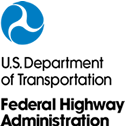 |
At a time of increasing traffic fatalities and aging infrastructure, now more than ever we need to identify where progress is being made.
The National Roadway Safety Awards is one of my favorite endeavors in our Foundation's portfolio. It is the time when we get to hear directly from professionals in the field who are making a tangible difference, and honor these unsung heroes' dedication, innovation, and demonstrated lifesaving successes. At a time of increasing traffic fatalities and aging infrastructure, now more than ever we need to identify where progress is being made, and amplify those lessons learned for the benefit of others. We can reach our goal of zero deaths on the nation's roadways, but it's an effort that must proceed city by city, county by county, and state by state. This Guide presents some of the very best examples of what that means.
I'd be remiss not to thank our partners at the Federal Highway Administration, who provide the national leadership on roadway safety and who have supported this Awards program since its inception. Their spirit of collaboration and dedication to efficient diffusion of safety innovations has saved countless lives and set a national example for how we will ultimately eradicate traffic deaths.
On behalf of the staff of the Roadway Safety Foundation, I extend my heartfelt congratulations to all of the winners of the 2017 National Roadway Safety Awards, and my thanks to all of our excellent applicants. Whether you're reading this Guide to find ideas that you might be able to replicate in your agency, or whether you're simply reading it to learn a bit more about how your state or local highway officials are working to keep you safe, I hope you'll take from it a renewed appreciation for the vital role that safe roads play in saving lives.
Thank you again, and congratulations!
| Gregory Cohen, P.E. Executive Director Roadway Safety Foundation |
Roadway Safety Foundation 1920 L Street NW, Suite 525 Washington, DC 20036-5012 www.roadwaysafety.org |
 |
Examples of winning entries from past competitions can be found at www.roadwaysafety.org/programs/national-roadway-safety-awards
The Safety Concern: Roadway departures account for nearly 40% of Delaware's fatal crashes, and half of them occur on curves
The Solution: High-friction surface treatments (HFST) dramatically improve traction and reduce fatal crashes
The Result: A 56% reduction in roadway departure crashes across the treated sites, and an overall benefit-cost ratio of 23.97
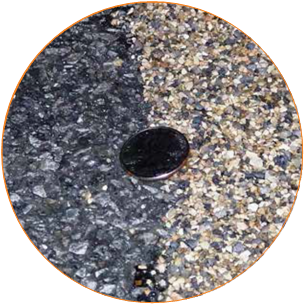
Based on statewide crash data, 38% of fatalities and 21% of serious injuries in the state of Delaware involved a roadway departure crash. Half of these crashes occurred within a horizontal curve. Additionally, wet/snowy/icy pavement accounted for 22% of roadway departure fatalities and serious injuries.
High-friction surface treatments (HFST) are pavement applications that can dramatically and immediately reduce crashes at locations such as horizontal curves or where wet road surfaces reduce pavement friction. To address roadway departure fatalities and serious injuries, DelDOT implemented HFST as a safety improvement through the State's Systemic Safety Improvement Program (SSIP).
As part of the SSIP, candidate locations for HFST were identified by reviewing the rate of roadway departure crashes that occurred on wet/snowy/icy pavement for all roadway segments in the state. Each candidate location was then screened to determine the feasibility and appropriateness of installing HFST. Factors considered included pavement condition, date of last resurfacing project, date of next resurfacing project, and presence of horizontal curvature. Once final locations were selected, DelDOT utilized a three-year, open-end contract established for HFST implementation using Highway Safety Improvement Program (HSIP), High-Risk Rural Roads Program (HRRRP), and Section 154 Penalty Transfer Funds.
As of April 2017, more than 33,396 square yards of HFST have been installed at over 20 locations. Before/after crash data shows that roadway departure crashes decreased by an average of 56% across all of the HFST locations collectively. Benefit/cost analysis indicates an overall benefit-cost ratio of 23.97.
Unlike other safety solutions that may involve geometric changes that require substantial funding, HFSTs are an innovative, low-cost, durable, and effective solution for reducing fatalities and serious injuries.
Agency: Delaware Department of
Transportation (DelDOT)
Project Contact: Adam Weiser,
Safety Programs Manager
Email: Adam.Weiser@state.de.us
Phone: (302) 222-5905
The Safety Concern: Wrong-way driving (WWD) incidents statewide, and a spike in WWD particularly in the Tampa Bay area, which experienced 11 WWD fatalities in one year
The Solution: A comprehensive approach to mitigating wrong-way driving through infrastructure and operational improvements, as well as policy changes and ongoing research, implementation and monitoring efforts
The Result: Sustained and proactive engineering countermeasures, education efforts, and enforcement actions helped mitigate WWD crashes statewide

Recently, there was a spike in wrong-way driving (WWD) crashes in Florida, and particularly in the Tampa Bay area during 2014. In one crash, four University of South Florida students were traveling on Interstate 275 when they were struck by a wrong-way driver. All five people involved died in this tragic crash. All totaled, in 2014 the Tampa Bay area experienced seven wrong-way crashes that resulted in 11 fatalities.
The rise in wrong-way crashes was not limited to the Tampa Bay area, but was observed statewide. The Florida Department of Transportation (FDOT) responded with the launch of the Wrong-Way Driving Mitigation Initiative. This initiative involved a holistic approach based on innovations in three areas:
Infrastructure improvements included (a) new minimum signing and pavement marking standards for statewide implementation, (b) FHWA-approved Request for Experiment (RFE) with Red Rectangular Rapid Flash Beacon and Internally Illuminated Raised Pavement Marker installations in the state, (c) a statewide WWD study and three research projects with a focus on deployment and learning, and (d) developing best practices to implement WWD countermeasures. This systemic approach has resulted in a dramatic reduction in WWD incidents. In the Tampa Bay region, for example, in 2015 there were no WWD crashes, and in 2016 there was one WWD crash which resulted in two fatalities. The effectiveness of the innovative infrastructure improvements is continuously monitored by FDOT's State and District Traffic Engineering and Operations Offices to explore every possible avenue to mitigate wrong-way driving in the state.
Agency: Florida DepartmentThe Safety Concern: A spike in vehicles striking fire department vehicles responding to crash scenes in the Grand Rapids area, and challenging freeway layouts that make providing advance notice to motorists difficult
The Solution: A multi-agency Traffic Incident Management (TIM) partnership that yielded new strategies for shielding and clearing crash scenes, including a crash attenuator truck and expedited towing
The Result: 31% reduction in tow truck response time, reduction in vehicles striking fire apparatus, and a 45% decrease in secondary crashes

Highway safety is a major concern not only for motorists, but also for the men and women that respond to unplanned traffic incidents. In less than one year in the Grand Rapids, MI area, for example, there were three separate incidents involving a vehicle striking a fire department truck that had responded to a crash scene.
A strong Traffic Incident Management Team (TIM) has been formed in the city of Grand Rapids to increase highway safety for everyone during emergency traffic incident responses on freeways. Partners on this team include representatives from the Michigan Department of Transportation (MDOT), Grand Rapids Police & Fire Departments, Michigan State Police, Kent County Road Commission, and the City of Grand Rapids. Over the past six years, this coalition has been able to successfully implement various innovative and unique initiatives to minimize first responders' exposure to traffic, and to reduce backups, delays, and secondary crashes associated with unplanned incidents on freeways.
The specific strategies that this team has established include the creation and deployment of the nation's first crash blocking vehicle used by a fire department, which is a modified city dump truck affixed with a crash attenuator. Additionally, the team developed and installed sight distance parking signs for first responders, and implemented high visibility markings on water standpipes along the freeway to facilitate their immediate location by responders. Instant Dispatch Towing has also been implemented, wherein tow trucks are immediately called to the scene of a wreck at the same time that other emergency vehicles are summoned.
This combination of initiatives has resulted in a 31% decrease in the time it takes tow trucks to arrive on scene, and a reduction in the average number of vehicles striking an on-scene fire apparatus from one per year to zero in the last two years. These efforts have made a positive impact on not only the safety and mobility of motorists traveling along the freeways within Grand Rapids, but have also been extremely beneficial for the men and women that risk their lives on the highways when responding to crashes.
Agency: Michigan Department of
Transportation (MDOT) and Partners
Project Contacts: Suzette Peplinski, Traffic
Safety & Operations Engineer,
MDOT West Michigan TOC
Email: Peplinskis@michigan.gov
Phone: (616) 451-8448
The Safety Concern: County roads in Minnesota account for half of all fatal crashes, but less than a quarter of vehicle-miles traveled in the state
The Solution: Development and implementation of County Road Safety Plans (CRSP) for all 87 Minnesota counties, emphasizing low-cost, systemic improvements over high-cost reactive treatments
The Result: 330 low-cost, proactive safety improvements on the county road network, and a 25% reduction in the county road fatality rate during the four-year period following the CRSP process
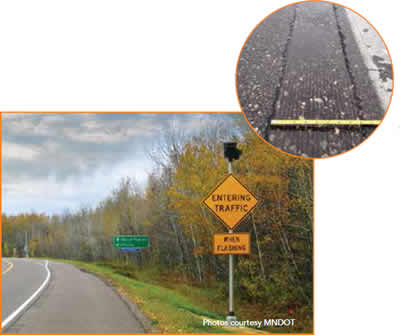
County roads account for half of the total number of fatal crashes in Minnesota, but only handle 24% of the total vehicle miles traveled in the state. Therefore, in an effort to improve roadway safety and save lives, Minnesota embarked on an ambitious undertaking in 2010 to develop County Road Safety Plans (CRSPs) for all 87 counties. Counties then implement improvement measures based on plan recommendations.
As a partnership between the Minnesota Department of Transportation and the Minnesota counties, the primary mission of the CRSPs was to improve the process for identifying safety issues by decreasing the burden on counties to complete a roadway risk analysis, select low-cost proven strategies, and submit complete and accurate projects to the HSIP solicitation with the goal of increasing the number of implemented projects.
The CRSPs were built on the systemic approach to rural highway safety. This approach utilized risk as the basis for safety investment decisions rather than actual crash history. The focus of the CRSPs was the implementation of proactive, low-cost safety strategies on a system-wide basis rather than reactive, higher-cost safety projects at fewer locations. This proactive approach allows for funding allocation and countermeasure implementation based on roadway conditions or risk factors that make fatal and serious injuries likely to occur.
Implementation of low cost, proactive safety improvements on the county road network (330 projects funded through the Highway Safety Improvement Program for a total of $80 million) resulted in a 25% reduction in the county road fatality rate during the four-year period following the CRSP process. More importantly, evidence suggests that the CRSPs are making a difference in saving lives and helping in the Minnesota Toward Zero Deaths drive.
Agency: Minnesota Department of
Transportation (MnDOT) and Minnesota
County Engineers Association
Project Contact: Mark Vizecky
State Aid Programs Engineer
Email: mark.vizecky@state.mn.us
Phone: (651) 366-3839
The Safety Concern: An alarming increase in crashes due to rising traffic volumes
The Solution: An instant roundabout installed in less than a week using off-the-shelf products
The Result: An 89% reduction in injury crashes with a solution 95% less costly than a traditional roundabout

Modern roundabouts are one of the safest forms of intersection traffic control. Studies have demonstrated that they can reduce injury crashes by nearly 90 percent when they replace a two-way stop. The Virginia Department of Transportation (VDOT) is therefore installing roundabouts where appropriate across the commonwealth. However, there is a drawback: replacing a traditional intersection with a roundabout is a substantial construction project that is both costly and time-consuming.
Meanwhile, an intersection in Northern Virginia had a critical crash problem. As traffic increased at the intersection of Poland Road and Edgewater Street, crashes rose to as many as nine per year, with nearly half involving injury. VDOT's engineers evaluated several forms of traffic control–all-way stop, traffic signal, and mini-roundabout among them–but the best traffic control for the intersection
Funding for a roundabout was justifiable based on the crash history, but VDOT could not ignore the immediate safety problem while waiting for permanent construction. Engineers developed an "instant roundabout" using off-the-shelf markings, tubular markers, and plastic curb sections instead of concrete. With community support, VDOT installed the instant roundabout in less than six days at a cost of $90,000–95 percent less costly than a permanent roundabout at the same intersection.
The crash problem abated just as quickly as the roundabout was installed. Crashes dropped by 30 percent, but even more remarkable has been the reduction in injury crashes. The roundabout operated for nearly 3½ years
without a single injury crash, and it has now reduced injury crashes by 89 percent, about what would be expected of a permanent roundabout. A three-minute-long queue on the Edgewater approach has also disappeared. This highlights another key benefit of roundabouts: along with safety improvements, efficiency gains are realized as traffic flows freely in the absence of timed signals.
The positive safety results are leading VDOT to consider the treatment elsewhere as an immediate fix for preventing crashes while a permanent solution is identified and implemented. The Department is also working to identify traffic products that can make instant roundabouts even better, with lower maintenance needs.
Agency: Virginia Department of
Transportation (VDOT)
Project Contact: Ivan Horodyskyj,
District Traffic Engineer
Email: ivan.horodyskyj@VDOT.Virginia.gov
Phone: (703) 259-2330
The Safety Concern:High rates of fatal and serious injury crashes – especially head-on collisions – on high-speed two-lane roads with seasonal traffic levels over 20,000 vehicles per day
The Solution: A multidisciplinary approach to safety involving collaboration between each of the "4 Es": Engineering, Enforcement, Education, and Emergency Response
The Result:In the decade since Alaska's Safety Zones were established by law, fatal and serious injury crashes have a sustained reduction in the established Safety Corridors by 45%

In 2006, Alaska signed into law a bill establishing "Safety Zones" on stretches of state roads documented to have the highest fatal and major injury crash rates and traffic volumes at or near capacity. The primary goal was to eliminate two-lane, high-speed, head-on collisions, centering on the Federal Highway mandated safety goal to focus on severe injury and fatal crashes. The bill directed that 50% of fines be appropriated to Alaska Department of Transportation and Public Facilities (ADOT&PF) highway safety programs, additional enforcement, and education opportunities. The final decision designating a safety corridor is determined by the Commissioner for ADOT&PF and the Commissioner for Public Safety.
The resulting data-driven program uses a multidisciplinary approach where cost-effective engineering solutions, education, enforcement, and emergency service reviews ("4E's Approach") combine to combat high-risk driving behavior and mitigate capacity problems until long-term improvements are built. Economical and visible engineering solutions (passing and turning lanes, rumble strips, high level warning signing, and delineation) have been combined with educational tools like radar speed signs and repeated media campaigns, as well as increased law enforcement actions. Emergency responder consultations result in targeted winter maintenance efforts, addressing incident communications equipment needs, and planning for rescue equipment, as well as improved lines of communications between the 4 E's. Data collection appears to reflect fewer high-risk drivers due to increased enforcement and threat of increased fines. This synchronization appears fundamental to each corridor's success.
Subsequent data – collected and analyzed yearly – shows that the 4E Approach can have immediate and lasting positive safety effects within a corridor: fatal and major injury crashes are down in Alaska's four established Safety Corridors by 45% overall since May 2006. Additionally, in 2018, the state plans to be able to remove the Safety Corridor designation for the first time: a major overhaul to convert a road into a divided highway is expected to bring the road's fatality and serious injury rate below the state average, and therefore allow it to "graduate" from the Safety Corridor program.
Agency: Alaska Department of
Transportation & Public Facilities (ADOT&PF)
Project Contact: Scott Thomas, Regional Traffic
& Safety Engineer, Central Region
Email: scott.thomas@alaska.gov
Phone: (907) 269-0639
The Safety Concern: In the last decade, 8,752 motorists have died on Missouri's roads, leaving the state searching for an effective way to implement its Toward Zero Deaths strategy
The Solution: Five Design-Build teams competed in a unique procurement process to offer MoDOT the most cost-effective safety treatments based on Highway Safety Manual analysis
The Result:A winning bid to address improvements at all 31 identified locations, projected to prevent 73 deaths and serious injuries over 10 years and be completed nine months ahead of schedule

During the last ten years, 8,752 motorists left on a trip in Missouri, but never made it to their destination. Unfortunately they joined more than 36,000 other motorists annually in this country who ended their trip, unexpectedly, as a tragic statistic
MoDOT's St. Louis District developed a bold strategy to implement Missouri's Blueprint: A Partnership towards Zero Deaths, the state's strategic highway safety plan. Utilizing three-year crash data, they identified 31 locations with the highest safety concerns in two counties. Then, they chose five teams comprised of nationally known traffic/safety consultants and contractors to deliver safety proposals to MoDOT
The teams competed in a unique design-build procurement which emphasized implementing the most cost-effective safety treatments utilizing Highway Safety Manual (HSM) analysis. A fixed price, $24.11 million, variable scope contract encouraged teams to provide the maximum safety benefit with the dollars available.
Proposals were scored based on four categories and one of those categories was HSM safety analysis. HSM analysis was required for each proposed safety improvement, including calculations of the projected reduction of fatal and serious injury crashes. The best value team targeted safety improvements at all 31 locations. Their proposal included system-wide application of high-friction surface treatment (HFST), inlaid pavement markers, transverse rumble strips, LED stop signs, intersection conflict warning system (ICWS) and a roundabout. Over the period of 10 years, the project is expected to prevent 73 fatal and serious injury crashes. In addition, the winning project is projected to be completed nine months ahead of MoDOT's requirement in the initial procurement.
More information is available at the project website: www.modot.org/stlouis/major_projects/SLSafetyDBProject/
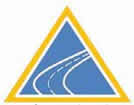
Agency: Missouri Department of
Transportation (MoDOT)
Project Contact: Bill Schnell,
Assistant District Engineer
Email: bill.schnell@modot.mo.gov
Phone: (314) 453-1802
The Safety Concern:The intersection of two county roads in Burlington County, NJ had experienced severe crashes and was identified for improvements
The Solution: The installation of a roundabout at the location
The Result: A 100% reduction in right-angle and left-turn crashes at the location, and additional roundabout implementation elsewhere in the state
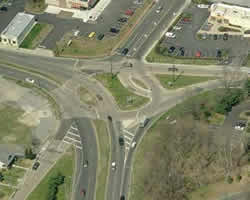
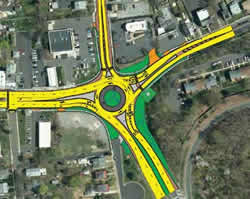
The intersection of CR 528 and CR 660 in Chesterfield Township, Burlington County had experienced severe crashes and was identified for improvements in the Delaware Valley Region. A data-driven approach helped engineers identify the use of a modern roundabout as the preferred design alternative. However, buy-in was also needed from a skeptical public.
Engineers and local officials were able to use innovative data-driven safety analysis tools to communicate the benefits of modern roundabouts to the citizens of Burlington County. The roundabout was built in 2014, and the before-and-after crash analysis indicated a 100% reduction of right-angle and left-turn crashes.
Due to citizens' support of the Chesterfield Township roundabout, Burlington County has built three more modern roundabouts utilizing a variety of funding sources. NJDOT is confident that use of innovative infrastructure treatments utilizing data-driven tools will result in significant reductions in intersection fatalities in New Jersey.
Agency: New Jersey Department of
Transportation (NJDOT)
Project Contact: Sophia Azam,
Executive Manager
Email: sophia.azam@dot.nj.gov
Phone: (609) 530-3474
The Safety Concern:Outcome evaluations are an important, but often-overlooked, element in demonstrating that safety investments achieved their real-world potential
The Solution: A thorough review of six years of safety projects
The Result:Strong, actionable evidence for TDOT showing a 60% reduction in crash frequency overall, and cost-effectively identifying additional locations in need of further study or improvement

Evaluation is a critical, but all-too-oftenoverlooked, component of robust safety management. To determine the effectiveness of a variety of safety improvements made, the Tennessee Department of Transportation's (TDOT) Project Safety Office –part of the Strategic Transportation Investments Division – committed to analyzing the effectiveness of safety projects in its Highway Safety Improvement Program from 2010 to 2015. Phase One of the analysis examined 261 sites with crash data three years before and after implementation of the safety improvements recommended in the site's road safety audit report. Phase Two of the analysis involved a more detailed review of 45 sites using the Highway Safety Manual (HSM) to estimate crash frequency with and without implementation of safety countermeasures.
Phase One suggests that the TDOT safety program has been overall successful in reducing crash frequency by 60%. Comparing before and after crash numbers, there were 157 sites out of 261 that indicated a reduction in crashes after implementation of the recommended countermeasures. Seventy-eight sites had an increase in crashes after implementation and 26 sites had no change. The number of fatalities and incapacitating crashes did not change for 93 sites, increased for 60 sites, and decreased for 108 sites.
In Phase Two, TDOT conducted an Empirical Bayes (EB) before/after evaluation of 45 sites. This method included using a safety performance function (SPF) to predict crash frequency, adjusting for site specific geometric and traffic volume conditions, and weighting the observed crash frequency with the SPF-predicted crash frequency to obtain an expected average crash frequency. In measuring the safety effectiveness, it was found that 56% percent of the sites had a reduction in observed after-crash frequency compared to before-crash frequency.
The HSM is an excellent tool for introducing crash prediction capabilities to transportation planning, design, and maintenance. As TDOT continues to advance the Project Safety Office with the development of Tennessee-specific data, this information will assist to further implement the HSM effectively. The safety project evaluation will continue as additional projects are completed, and TDOT will use the HSM to achieve its goal of reducing crashes in Tennessee.
Agency: Tennessee Department of
Transportation (TDOT) –Project Safety Office
Project Contact: Brandon Darks,
Manager –Project Safety Office
Email: Brandon.Darks@tn.gov
Phone: (615) 253-3999
Our sincere thanks to this year's blue ribbon panel. Each of the judges below dedicated significant time and energy to evaluate the pool of applicants on the basis of innovation, effectiveness, and efficient use of resources. Without their contributions, the Awards program could not succeed.
| King W. Gee Director of Engineering and Technical Services American Association of State Highway and Transportation Officials (AASHTO) |
Jennifer Smith Director, Image and Brands Michelin |
| Michael Griffith Director, Office of Safety Technologies Federal Highway Administration |
Marie B. Walsh, PhD Director Louisiana Local Technical Assistance Program (LTAP) |
| Bruce Hamilton Director of Safety and Research Programs Roadway Safety Foundation |
Terecia Wilson Senior Fellow, Institute for Global Road Safety and Security Clemson University |
| Bernardo Kleiner Senior Program Officer – Transportation Safety Specialist Transportation Research Board (TRB) |
|
The Federal Highway Administration 
The FHWA Office of Safety's mission is to significantly reduce highway fatalities and serious injuries by making our roads safer through a data-driven, systematic approach to putting safety first when applying engineering, education, enforcement, and emergency medical services. Focus areas include: Comprehensive Strategic Planning, Roadway Departure, Intersections, Pedestrians and Speed Management. US Department of Transportation |
The Roadway Safety Foundation 
The Roadway Safety Foundation is a 501(c)(3) nonprofit charitable and educational organization solely dedicated to reducing the frequency and severity of motor vehicle crashes by improving the safety of America's roadways. To this end, the RSF focuses on improving the physical characteristics of roadways, such as design and engineering, operating conditions, removal of roadside hazards, and effective use of safety features. Roadway Safety Foundation |
